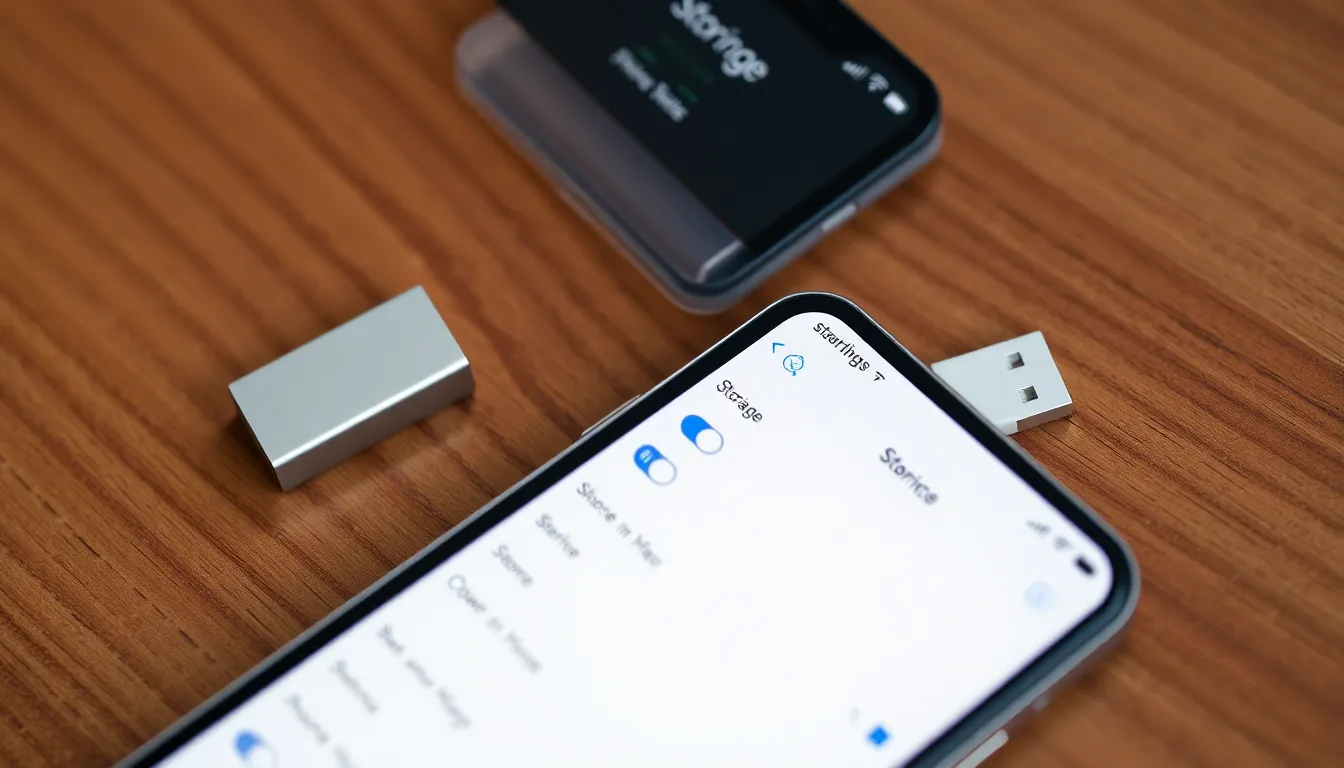Table of Contents
ToggleRunning out of storage on an iPhone is like realizing you’ve eaten the last slice of pizza—devastating and totally avoidable. Whether it’s those adorable cat videos or your latest obsession with mobile gaming, it seems like every gigabyte counts. But don’t worry; there’s hope!
Understanding iPhone Storage
iPhone storage plays a crucial role in user experience. Knowing the importance of storage helps users make informed decisions about managing their devices effectively.
Why Storage Matters
Storage stores apps, photos, videos, and files. Users often encounter limitations when trying to download new apps or update existing ones. High-resolution videos consume large amounts of space. Empty storage invites productivity and creativity, allowing for seamless experiences. Additionally, freeing up space enhances the usability of the device. Regular monitoring and managing storage can prevent last-minute frustrations.
How Storage Affects Performance
Performance directly correlates with available storage. Insufficient space may lead to sluggish operation. Users might notice slow app launches, delayed system responses, or freezing issues. Background processes require space to run efficiently, impacting multitasking capabilities. Busy devices can struggle with tasks, generating a less satisfying user experience. Regular maintenance ensures optimal performance and responsiveness, enhancing the overall iPhone usage.
Options for Increasing Storage

Increasing storage on an iPhone can ensure smoother performance and greater efficiency. Users have various options to consider for enhancing available space.
iCloud Storage Plans
iCloud offers various storage plans that cater to different needs. Starting at 5 GB, this free tier allows users to store photos, documents, and backups. For expanded storage, Apple provides paid plans with options of 50 GB, 200 GB, and 2 TB. The 50 GB plan costs $0.99 monthly, while the 200 GB plan is $2.99 monthly. The largest plan, at 2 TB, comes in at $9.99 monthly, ideal for families sharing storage. Choosing iCloud also ensures automatic backups, preventing data loss and enabling easy access across multiple devices.
External Storage Solutions
External storage solutions present another viable option for iPhone users. Flash drives with Lightning connectors allow for quick file transfers and extra storage. Brands like SanDisk and Leef offer these devices, which often come in capacities from 16 GB to 256 GB. Additionally, wireless external drives enable users to back up photos and videos without needing any cables. These drives can connect to iPhones via Wi-Fi, offering convenience and accessibility. Using these options can free up significant space, accommodating more apps, photos, and videos.
Purchasing iCloud Storage
Purchasing iCloud storage offers a straightforward solution for managing iPhone storage limits. An upgrade provides additional capacity, keeping apps, photos, and backups safe.
How to Upgrade iCloud Storage
To upgrade iCloud storage, open the Settings app on the iPhone. Tap on your name, then select “iCloud.” From there, choose “Manage Storage” or “iCloud Storage.” Next, select “Buy More Storage.” A list of available plans appears. Follow the prompts to complete the purchase.
Pricing and Plans Available
iCloud storage plans start at a free tier of 5 GB. From there, users can upgrade to a 50 GB plan for $0.99 per month. A 200 GB plan costs $2.99 per month, while the 2 TB plan is $9.99 per month. Each plan includes automatic backups, ensuring data security and convenience. These options cater to various storage needs, making it easy for users to select the best fit.
External Storage Devices
External storage devices provide additional options for managing iPhone storage. They can alleviate the issue of running out of space by allowing users to store files externally.
Types of External Storage
External storage devices come in various forms, including flash drives with Lightning connectors, wireless external drives, and SD card readers. Flash drives enable direct connection to an iPhone for quick file transfers. Wireless external drives sync via Wi-Fi, allowing for seamless backup without cables. SD card readers facilitate the insertion of memory cards, providing extra space for photos and videos.
Pros and Cons of Each Option
Each external storage option carries unique advantages and drawbacks. Flash drives offer portability but can be small enough to misplace. Wireless drives provide convenience but may require a battery for operation. SD card readers allow easy access to expanded storage but are limited to specific iPhone models. Users must evaluate the trade-offs to determine the best solution for their storage needs.
Tips for Managing Your Storage
Efficient storage management can significantly enhance your iPhone experience. Users can maximize available space with a few straightforward strategies.
Optimizing Storage Usage
Regularly reviewing storage settings is essential. Navigate to Settings, then tap on General and select iPhone Storage. This displays a comprehensive list of apps and the space they consume. For improved efficiency, prioritize offloading apps you rarely use. This action removes the app while retaining its data for future use. Enabling the “Optimize Photos” option keeps high-resolution images in iCloud, conserving local space. Users can also consider streaming music and videos rather than downloading. Consistent adherence to these methods helps maintain a smoother device performance.
Cleaning Up Unused Apps and Files
Identifying and deleting apps that are no longer needed can free up significant space. Start by tapping and holding an app icon until it wiggles. Then, tap the “X” to uninstall. Users should also check for large files in the Files app by sorting documents by size. Deleting outdated videos and photos saves even more space. Additionally, clearing browser caches and message attachments can contribute to storage recovery. Regular monitoring of storage can prevent future depletion and enhance overall functionality.
Managing iPhone storage doesn’t have to be a daunting task. By understanding the options available for increasing storage and implementing effective management strategies, users can enhance their device’s performance. Whether opting for iCloud storage plans or exploring external storage solutions, there’s a path that suits every individual’s needs. Regularly reviewing storage settings and cleaning up unnecessary files ensures a smoother user experience. With the right approach, users can enjoy their iPhones without the constant worry of running out of space. Embracing these solutions will lead to a more efficient and enjoyable iPhone experience.







